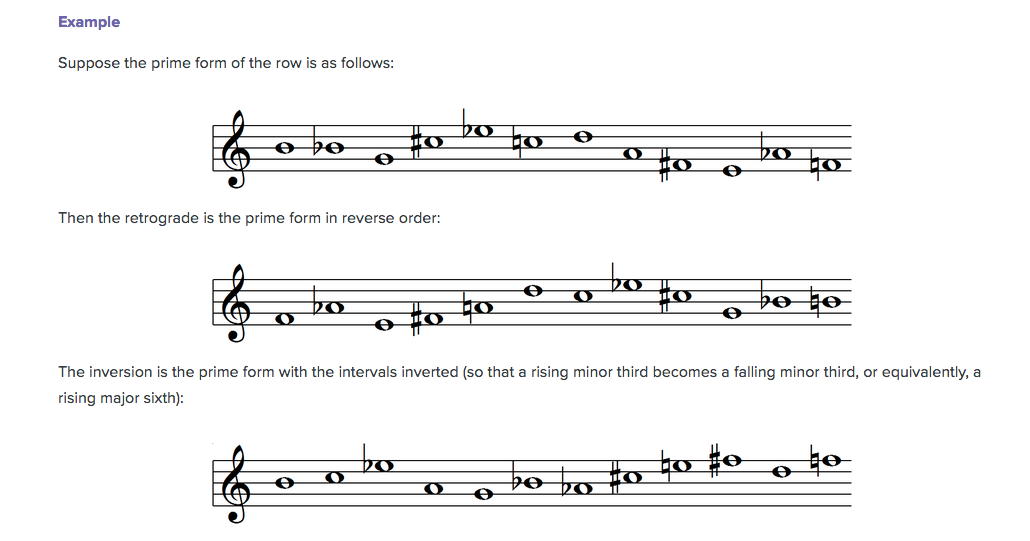Printable Version of Topic
Click here to view this topic in its original format
GMC Forum _ THEORY _ Negative Harmony?
Posted by: Adam M Feb 8 2019, 01:50 AM
Today I came across term "negative harmony" but the article didn't explain anything. It's only point was more or less "It's something abstract and unnecessary. You're not a genius, so just avoid it." It didn't even explain what to avoid. It sounds like something too advanced for someone at my stage of learning but I'm still curious.
Could anyone explain what negative harmony is, at least in the most basic way to help me get the general idea behind it?
Posted by: Caelumamittendum Feb 8 2019, 02:22 AM
I like that one. If I recall correctly it has an example too.
That one too.
Posted by: Adam M Feb 8 2019, 10:48 AM
I like that one. If I recall correctly it has an example too.
That one too.
Thank you! I understood it at once after watching these videos
Posted by: klasaine Feb 8 2019, 03:56 PM
It dates to early 20th classical music.
Schoenberg, Berg, Webern, Berio, Stockhausen, etc.
There are many 'interpretations' of how it can applied and utilized.
This guy (Ernst Levy) coined the term ... https://en.wikipedia.org/wiki/Ernst_Levy
Posted by: Adam M Feb 8 2019, 10:20 PM
Schoenberg, Berg, Webern, Berio, Stockhausen, etc.
There are many 'interpretations' of how it can applied and utilized.
This guy (Ernst Levy) coined the term ... https://en.wikipedia.org/wiki/Ernst_Levy
Do you mean it was recognized as a term in 20th century? Does it mean the composers before it didn't use it on purpose or were they not aware of it? I sure need to learn the music history. Whenever you or other GMC-ers talk about it it sounds very interesting.
Posted by: klasaine Feb 8 2019, 10:47 PM
Yeah, it's been a 'term' since the mid 20th cent. The technique was lumped into a broader category known as "Serial" or "12-Tone" music. Loosely, music that employs a lot of math techniques including the current iteration of 'negative' harmony.
The composers who utilized it were absolutely conscious of what it was.
Here's some light reading for you ...
https://en.wikipedia.org/wiki/Serialism
https://en.wikipedia.org/wiki/Twelve-tone_technique
https://en.wikipedia.org/wiki/Second_Viennese_School
Posted by: Adam M Feb 9 2019, 01:36 AM
The composers who utilized it were absolutely conscious of what it was.
Here's some light reading for you ...
https://en.wikipedia.org/wiki/Serialism
https://en.wikipedia.org/wiki/Twelve-tone_technique
https://en.wikipedia.org/wiki/Second_Viennese_School
Thank you. I will read it this afternoon, after work
Posted by: klasaine Feb 9 2019, 02:40 AM
Before it was called negative harmony it was called inverse or inversion harmony (or melody). *Early 20th cent. 1919, Vienna.
Behold, a 12-tone row ...
The top line is the 'row' (prime), the middle line is the same row in retrograde (reverse) and the bottom row is the inversion (or negative) of the top 'row'. You can also have a retrograde inversion ... and then of course transpose the rows utilizing all of this. Etc., etc., etc.
Here's one of the classic pieces using 12-tone technique ...
Posted by: Adam M Feb 14 2019, 04:06 PM
Behold, a 12-tone row ...

The top line is the 'row' (prime), the middle line is the same row in retrograde (reverse) and the bottom row is the inversion (or negative) of the top 'row'. You can also have a retrograde inversion ... and then of course transpose the rows utilizing all of this. Etc., etc., etc.
Here's one of the classic pieces using 12-tone technique ...
Thanks for all the materials! I think I understand more now! It took a few days but it's easier than memorizing all at once
Powered by Invision Power Board (http://www.invisionboard.com)
© Invision Power Services (http://www.invisionpower.com)
